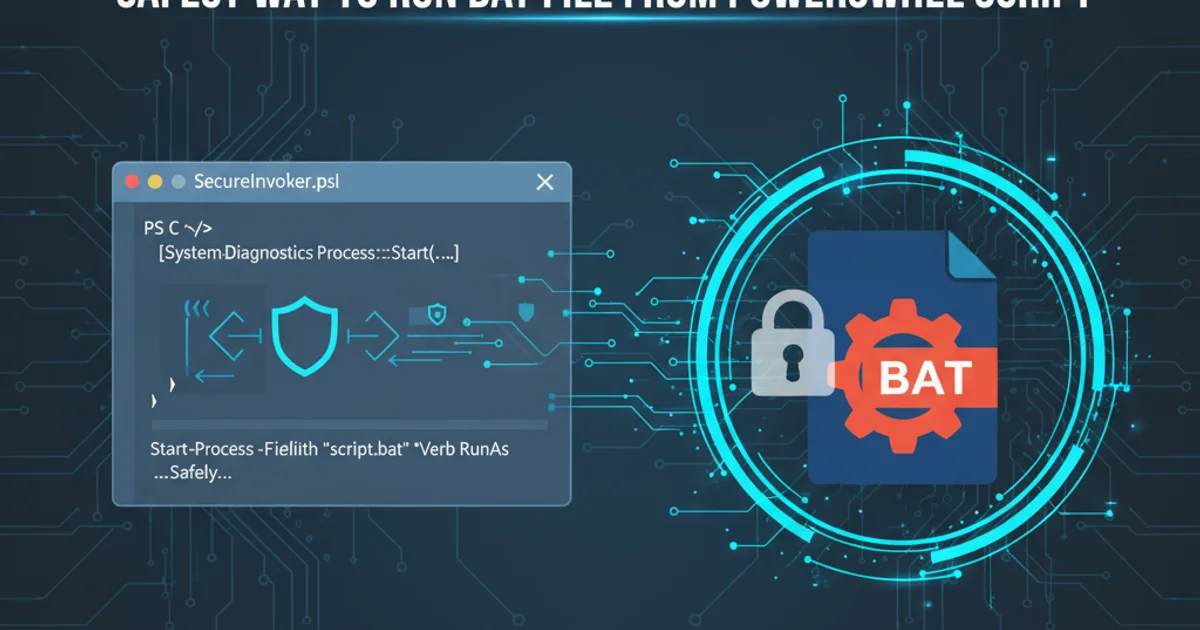Reading hardware register in C program
Categories:
Mastering Hardware Register Access in C Programs

Learn the fundamental techniques for reading and writing directly to hardware registers using C, essential for embedded systems and low-level programming.
Interacting directly with hardware registers is a cornerstone of embedded systems programming and low-level development. Unlike high-level application programming, where the operating system abstracts hardware details, embedded C programs often need to configure peripherals, read sensor data, or control actuators by manipulating specific memory-mapped registers. This article will guide you through the concepts and practical C techniques for safely and effectively accessing hardware registers.
Understanding Memory-Mapped I/O (MMIO)
Most modern microcontrollers and embedded processors use Memory-Mapped I/O (MMIO) to allow the CPU to communicate with peripheral devices. In MMIO, hardware registers are assigned unique addresses within the processor's memory space. This means that reading from or writing to a hardware register is conceptually similar to reading from or writing to a regular memory location. The key difference is that these 'memory locations' don't store data in RAM; instead, they directly control or reflect the state of a hardware component.
flowchart TD
CPU[CPU] -->|Address Bus| MMU(Memory Management Unit)
MMU -->|Data Bus| RAM[RAM]
MMU -->|Data Bus| Periph1(Peripheral 1 Registers)
MMU -->|Data Bus| Periph2(Peripheral 2 Registers)
Periph1 -- Controls --> DeviceA[Hardware Device A]
Periph2 -- Controls --> DeviceB[Hardware Device B]Memory-Mapped I/O Architecture
Basic C Techniques for Register Access
In C, accessing memory-mapped registers involves using pointers. Since registers are at fixed memory addresses, we declare a pointer to the appropriate data type (e.g., volatile unsigned int *) and assign it the register's base address. The volatile keyword is crucial here, as it prevents the compiler from optimizing away memory accesses that it might otherwise deem redundant. Without volatile, the compiler might assume that reading from the same memory location multiple times will yield the same result, which is not true for hardware registers whose values can change asynchronously.
#include <stdint.h>
// Define a base address for a hypothetical peripheral
#define PERIPHERAL_BASE_ADDR 0x40021000
// Define offsets for specific registers within the peripheral
#define CONTROL_REG_OFFSET 0x00
#define STATUS_REG_OFFSET 0x04
#define DATA_REG_OFFSET 0x08
// Calculate full register addresses
#define CONTROL_REG_ADDR (PERIPHERAL_BASE_ADDR + CONTROL_REG_OFFSET)
#define STATUS_REG_ADDR (PERIPHERAL_BASE_ADDR + STATUS_REG_OFFSET)
#define DATA_REG_ADDR (PERIPHERAL_BASE_ADDR + DATA_REG_OFFSET)
int main() {
// Declare a volatile pointer to an unsigned 32-bit integer
// This pointer will point to the control register
volatile uint32_t *control_reg = (volatile uint32_t *)CONTROL_REG_ADDR;
volatile uint32_t *status_reg = (volatile uint32_t *)STATUS_REG_ADDR;
volatile uint32_t *data_reg = (volatile uint32_t *)DATA_REG_ADDR;
// Read from a register
uint32_t status_value = *status_reg;
printf("Status Register Value: 0x%08lX\n", status_value);
// Write to a register (e.g., enable a feature)
*control_reg |= (1 << 0); // Set bit 0 to enable a feature
printf("Control Register after write: 0x%08lX\n", *control_reg);
// Write a specific value to a data register
*data_reg = 0xABCD1234;
printf("Data Register written with: 0x%08lX\n", *data_reg);
return 0;
}
Example of direct register access using volatile pointers.
Using Structs for Organized Register Access
For peripherals with many registers, defining a struct that mirrors the register map can significantly improve code readability and maintainability. This approach allows you to access registers using dot notation (e.g., peripheral->CONTROL_REG) rather than raw pointer arithmetic. It's crucial to ensure that the struct members are packed correctly to match the hardware's memory layout, often achieved using compiler-specific pragmas or attributes (like __attribute__((packed)) for GCC/Clang).
#include <stdint.h>
// Define a structure that maps to the peripheral's registers
// Use 'volatile' for each member to ensure correct access
// Use '__attribute__((packed))' to prevent compiler padding
// Ensure member types match register widths (e.g., uint32_t)
typedef struct {
volatile uint32_t CONTROL_REG;
volatile uint32_t STATUS_REG;
volatile uint32_t DATA_REG;
// ... other registers
} MyPeripheral_TypeDef;
// Define the base address of the peripheral
#define MY_PERIPHERAL_BASE_ADDR 0x40021000
int main() {
// Cast the base address to a pointer to our peripheral structure
MyPeripheral_TypeDef *MyPeripheral = (MyPeripheral_TypeDef *)MY_PERIPHERAL_BASE_ADDR;
// Read from a register using struct member access
uint32_t status_value = MyPeripheral->STATUS_REG;
printf("Status Register Value: 0x%08lX\n", status_value);
// Write to a register
MyPeripheral->CONTROL_REG |= (1 << 0); // Enable a feature
printf("Control Register after write: 0x%08lX\n", MyPeripheral->CONTROL_REG);
// Write a specific value
MyPeripheral->DATA_REG = 0xDEADBEEF;
printf("Data Register written with: 0x%08lX\n", MyPeripheral->DATA_REG);
return 0;
}
Register access using a struct definition.
__attribute__((packed)) or similar directives are crucial for ensuring the struct layout precisely matches the hardware register map.